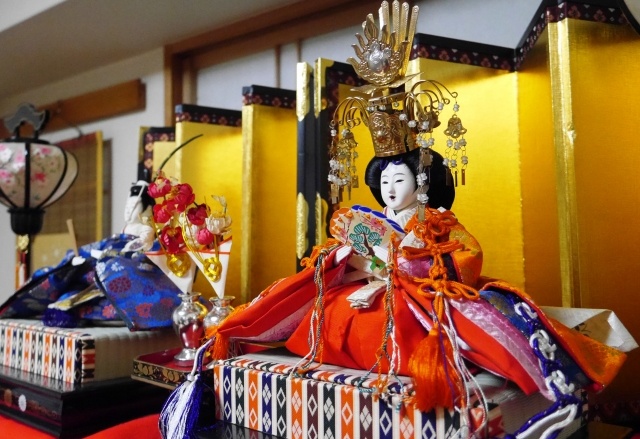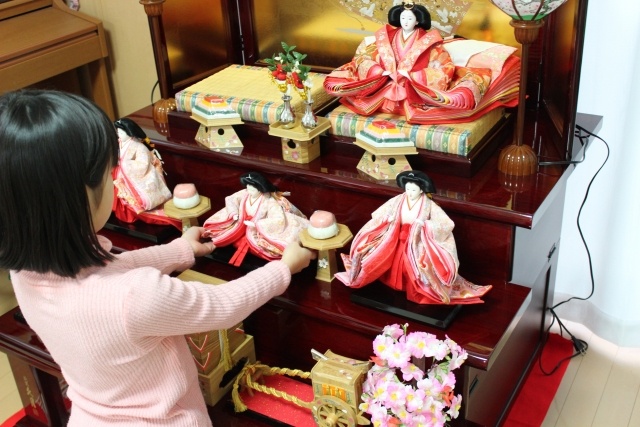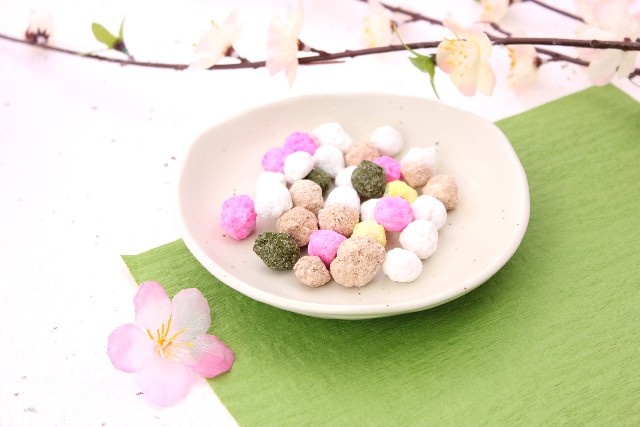March 3: Girls' Festival
March 3 is a special day in Japan: it's the day of the Hina Matsuri, or Girls' Festival. On this day, girls are celebrated and families pray for their health and prosperity.
By Highlighting Japan
Splendid dolls are the main decoration for this occasion. They're very fine, often made of porcelain. They're usually displayed in the home starting around mid-February and remain on display until March 3. It's said to be bad luck to display them after that, so families are quick to pack them away when the festival is done.
The two main dolls represent the ancient emperor and empress, with the empress dressed in a sumptuous silk kimono that sometimes has up to 12 layers of fabric. They're placed on a red cloth in front of a folding screen painted in shining gold or delicate patterns.

Many people have just these two dolls, but there are larger sets with up to seven levels of dolls representing different members of the royal court. In these big sets, three ladies-in-waiting are placed below the emperor and empress. Then below them are five musicians, and below them are two court ministers. The fifth level has three samurai, and the last two levels have tools, furniture and carriages.
https://www.youtube.com/watch?v=pKJMCB-HUj0
The modern version of the Girls' Festival goes back around 300 years or so. But it's said to be related to an even older custom in which people would make dolls out of paper and then rub the dolls on any aching parts of their bodies, or breathe on the dolls to transfer any bad luck or misfortune onto them, then float them down a river or on the ocean, taking the bad energy away. Some people still celebrate the Girls' Festival in this way, and you can see paper dolls being released into the water at a few famous places like Kyoto's Shimogamo Shrine.

In the past, girls also used to dress up in their best kimono and go visiting their friends on the day of the festival. They would sit with the dolls and have a tea party where they could eat special snacks.
These days most people celebrate with their families, but it's still customary to eat tasty and colorful treats. The treats include arare (pictured), small rice crackers colored pink for happiness, green for health and white for purity; hishimochi, diamond-shaped rice cakes also colored pink, green and white; and chirashi-zushi, sweet vinegared bowls of rice with lots of colorful toppings like raw fish and vegetables cut into interesting shapes.
The standard drink on this day is shirozake, a sweet, milky rice wine that's also available in a non-alcoholic version for kids called amazake.





